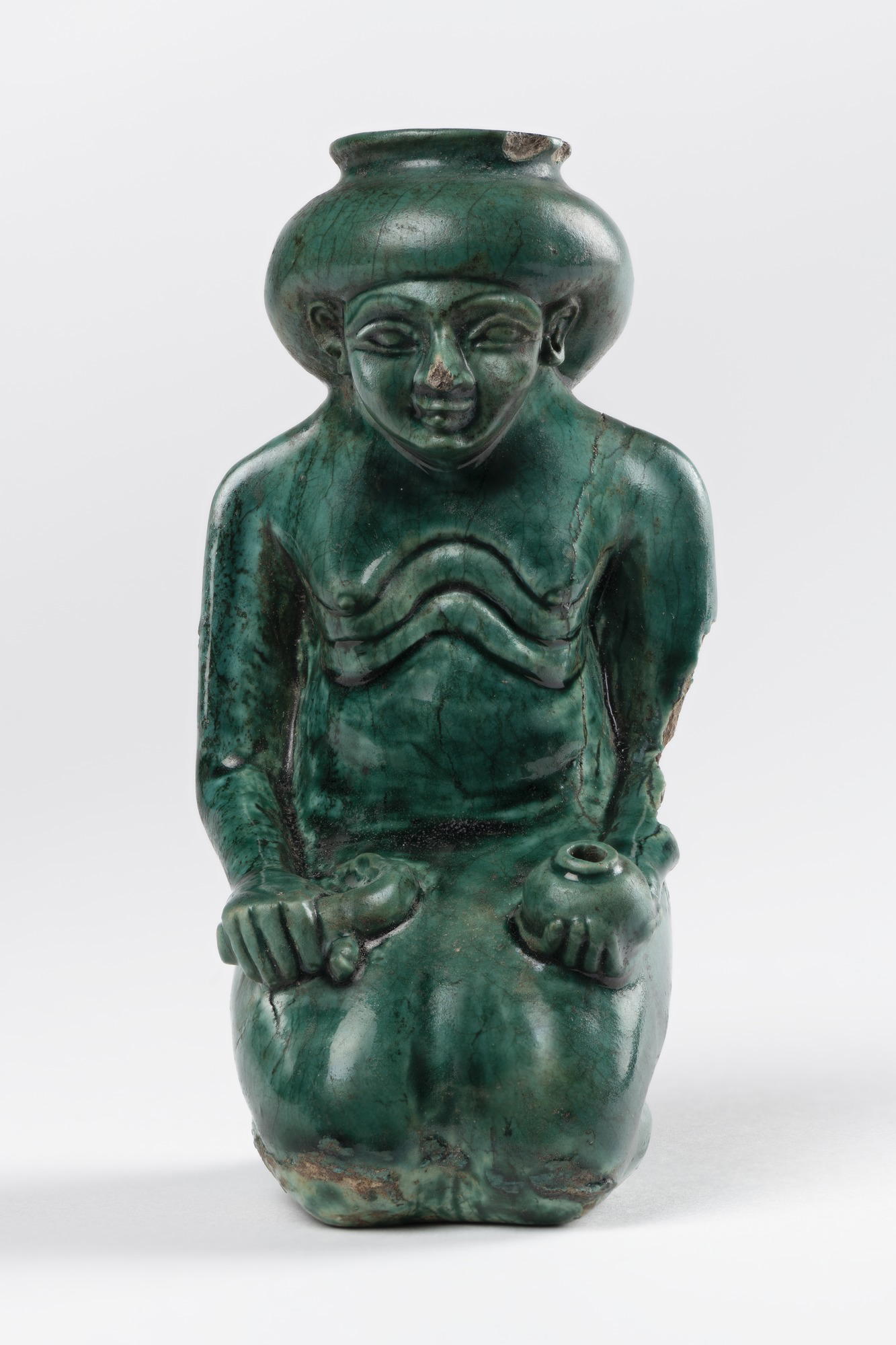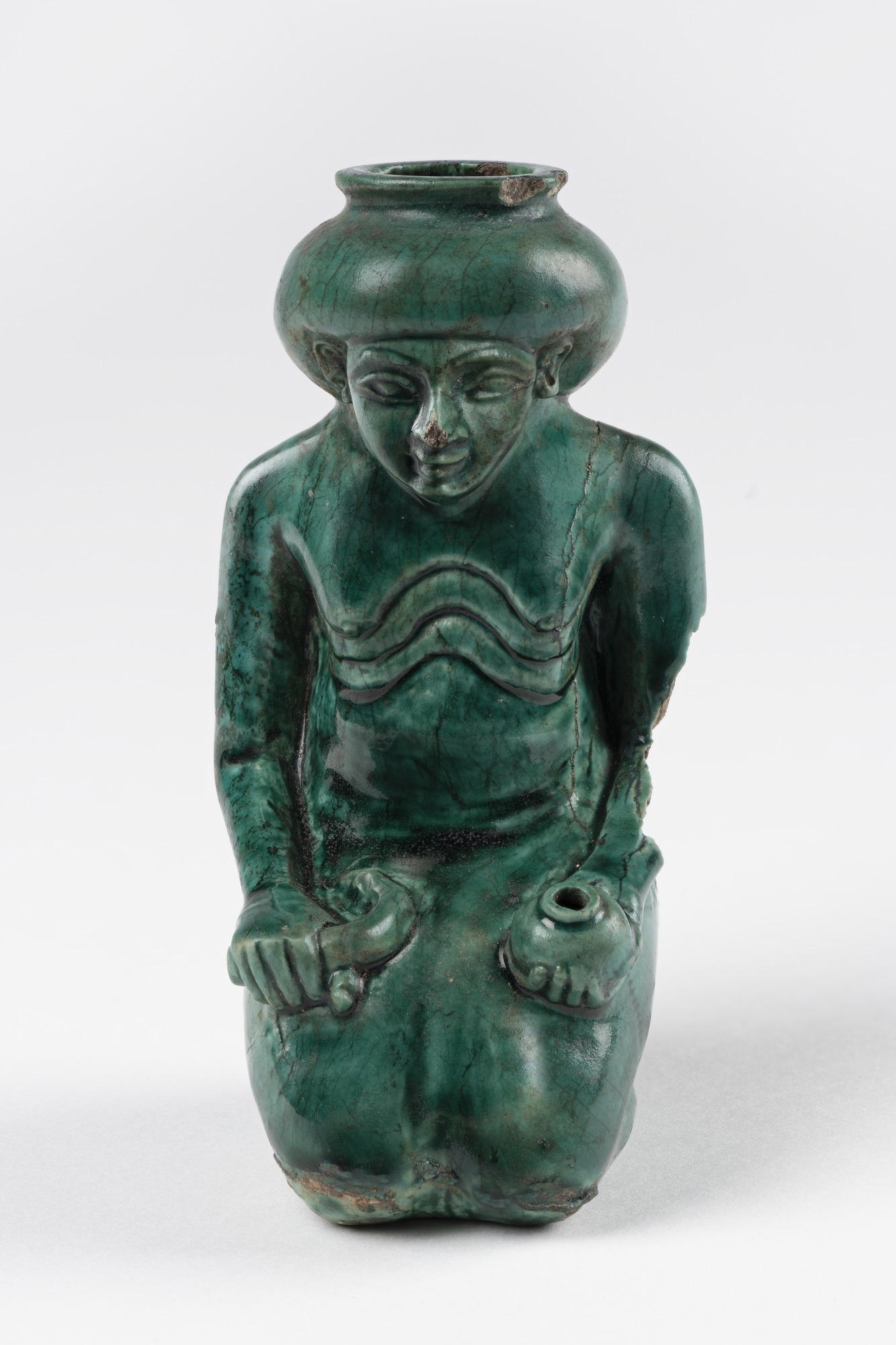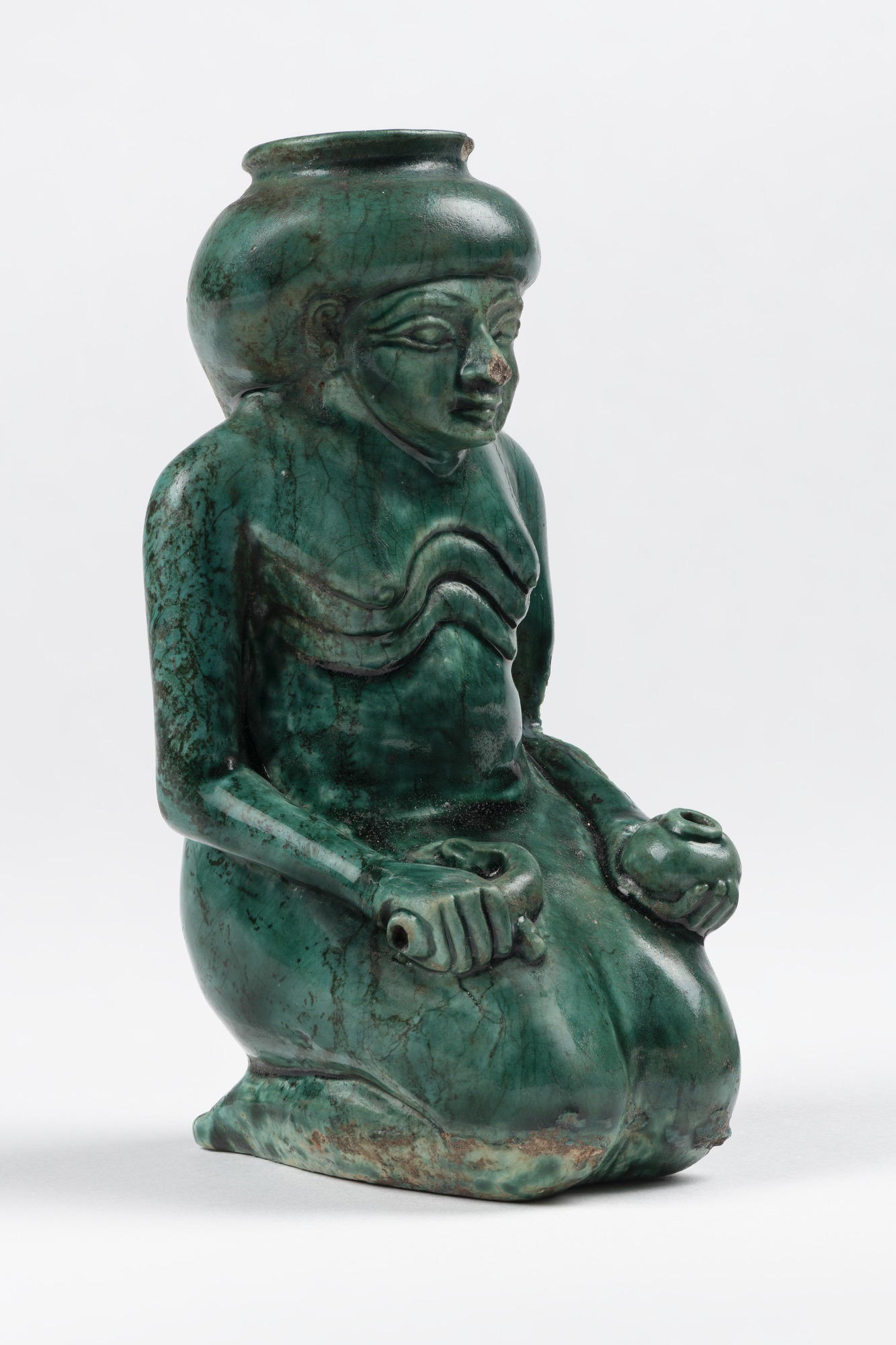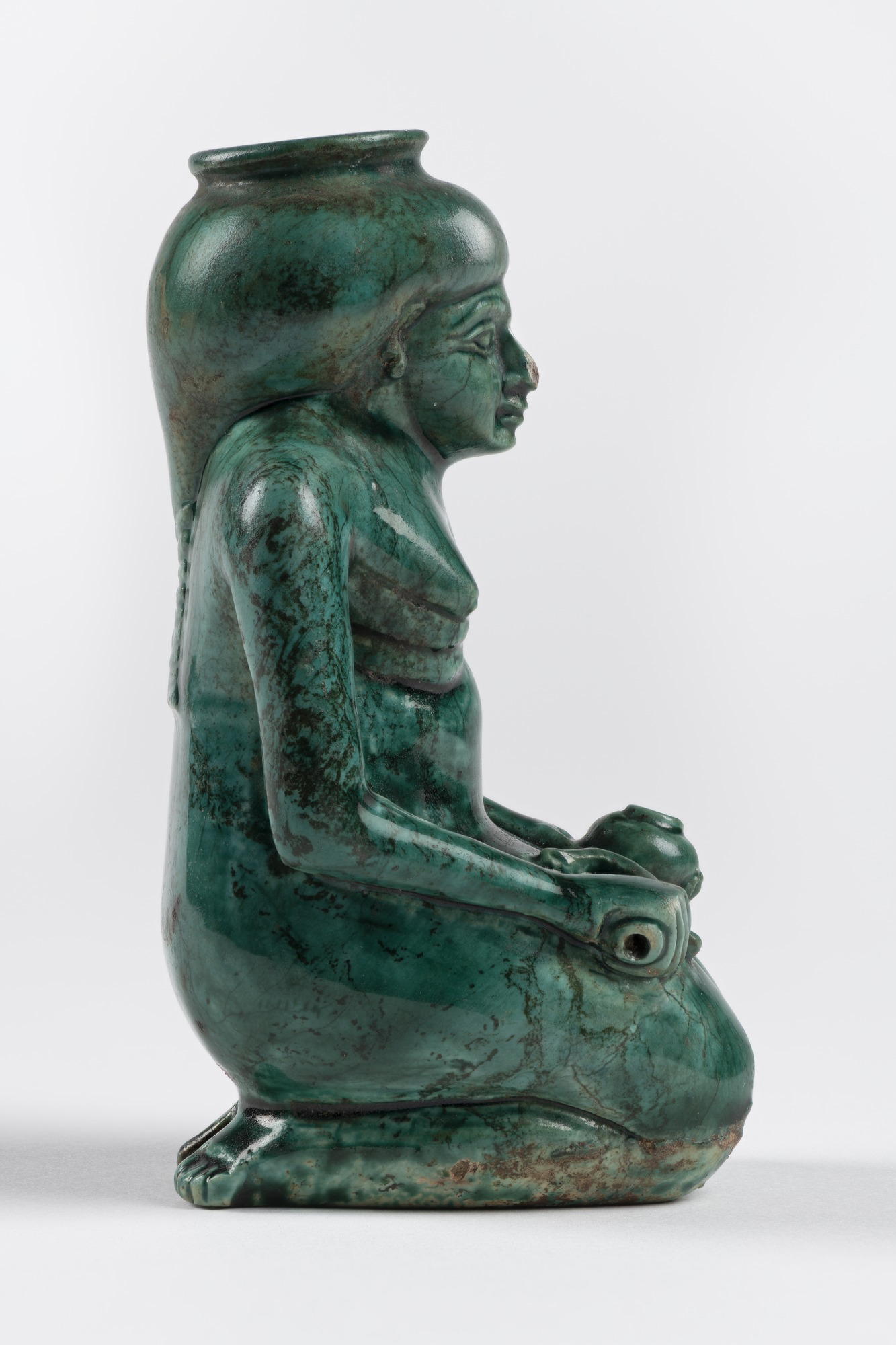Vessel in the Form of a Kneeling Woman
ca. 1479–1352 B.C.E.
1 of 5
Caption
Vessel in the Form of a Kneeling Woman, ca. 1479–1352 B.C.E.. Steatite, glaze, 3 13/16 x 2 in. (9.7 x 5.1 cm). Brooklyn Museum, Charles Edwin Wilbour Fund, 49.53. (Photo: Brooklyn Museum)
Gallery
Not on view
Gallery
Not on view
Frequent Art Questions
There's a figurine made from "glazed steatite" and a jewelry spacer made from glazed faience, from about 1000 BC, and they're this gorgeous blue or green. Is that how they were found or somehow worked on to get back that color?
I'm sure they've been cleaned, but other than that faience, especially, holds color VERY well. That's part of the reason the ancient Egyptians used it so much.Steatite is a type of stone that can also be glazed in a similar way. The glazes are glass-based which has a lot to do with how they've remained so stable.
Have information?
Have information about an artwork? Contact us at




